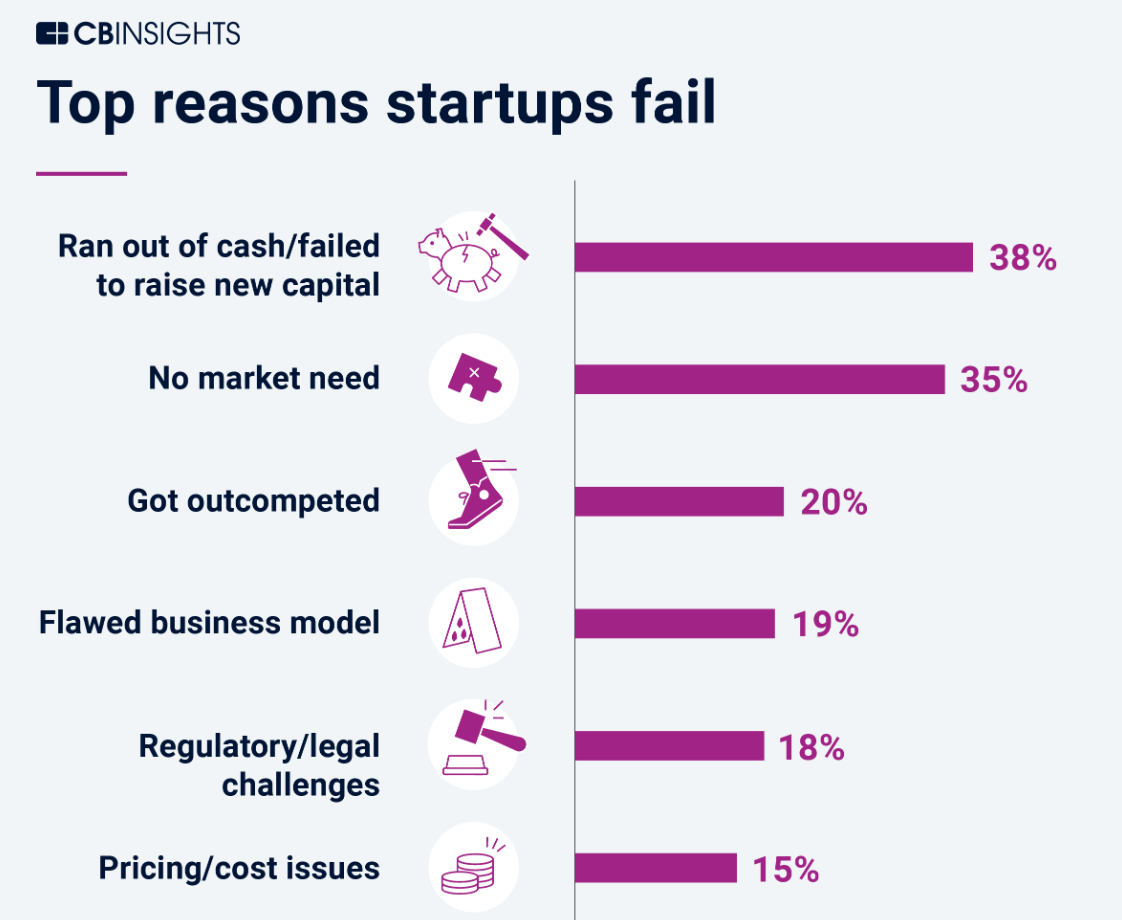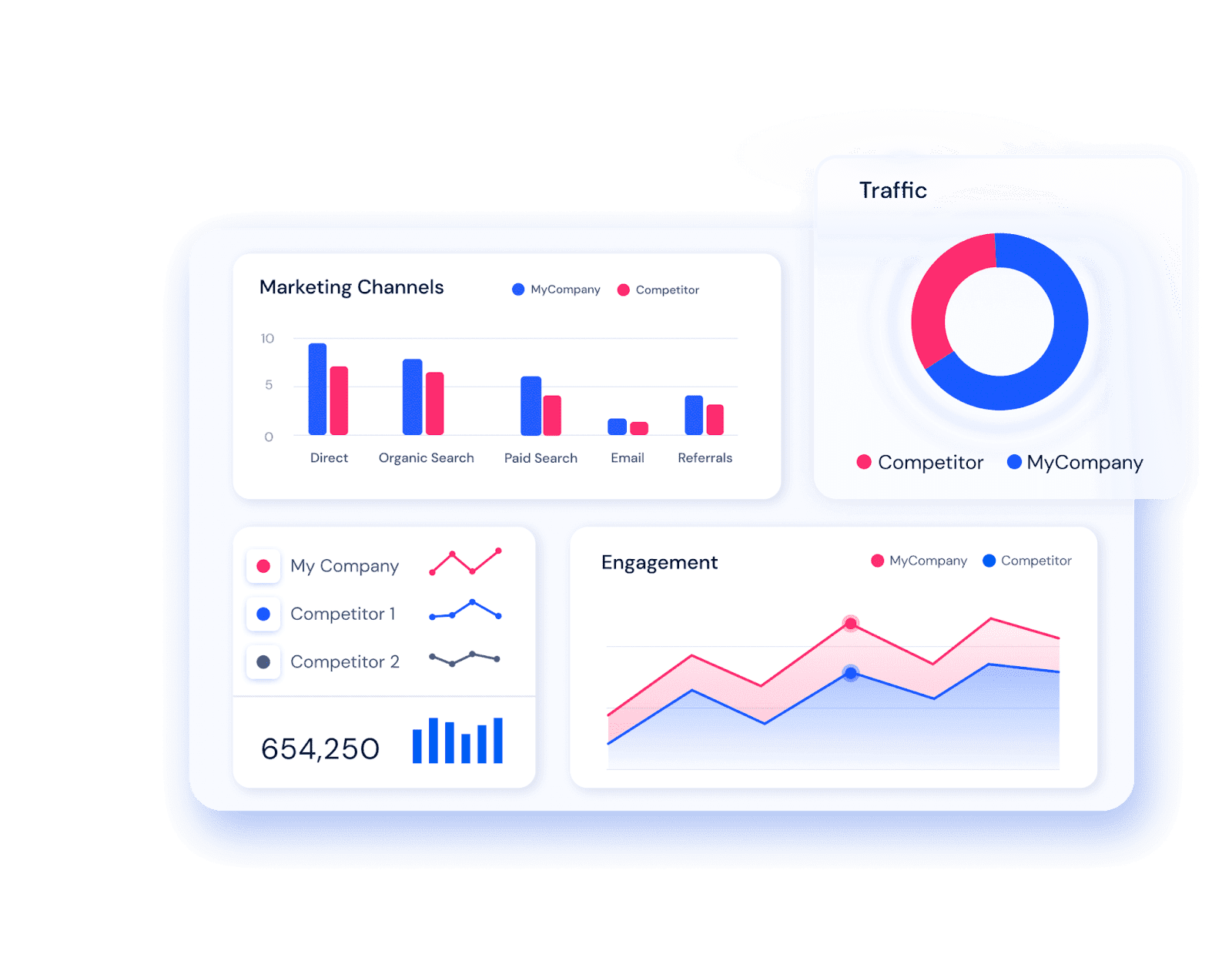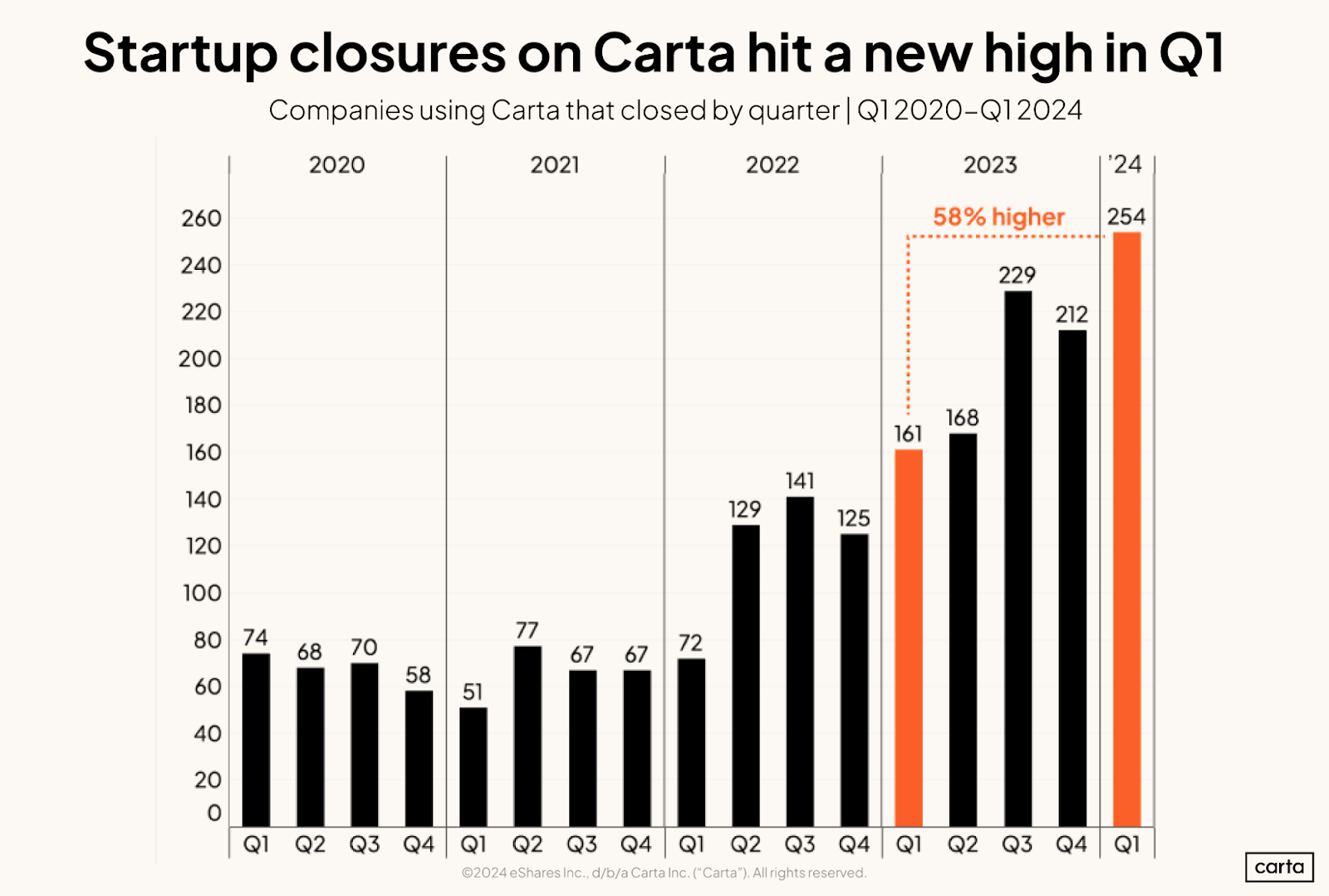Businesses stay ahead of market trends and competitors by being adaptable and informed. Those who fall behind lose customers or, even worse, close up shop. For startups, successful product launches are even more crucial to survival.
Consider this. In Q3 of 2023 alone, 311,000 new businesses popped up in the US. Many of these will never clear the startup phase. The majority won’t establish themselves in their respective markets.
Starting a new business or launching a new product is always risky. That’s why you need a product validation process. This process will help you find out demand and marketability while mitigating risk.
What is product validation?
Product validation is the process of verifying consumer needs for your product. It involves defining a need and whether your offer solves relevant problems. Product validation shows what customers will pay and highlights their biggest pain points. This ensures your product solves their most pressing issues.
A product validation strategy ensures you meet customer expectations before launching your product. Insights help you know when to cut your losses or when to change your product to align with customer needs.
Why is the product validation process important?
Let’s examine why validation is crucial to your product development process:
- Improve your product – ensure what you are making is relevant to what customers want and need. Validation informs you on ways to improve.
- Lower the risk of failure – market analysis and customer feedback help you decide how much to invest. You’ll also know when to pull the plug.
- Save time and money – identify potential mistakes before soft or full product launches.
- Confirm market demand – proves consumer interest and helps shape your final release.
What are the steps of product validation?
Want to develop the top product in your niche? Then, follow the steps of product validation.
1. Hypothesize a need
The first step of validation starts with market research. Identify the need you think exists and back it up with evidence.
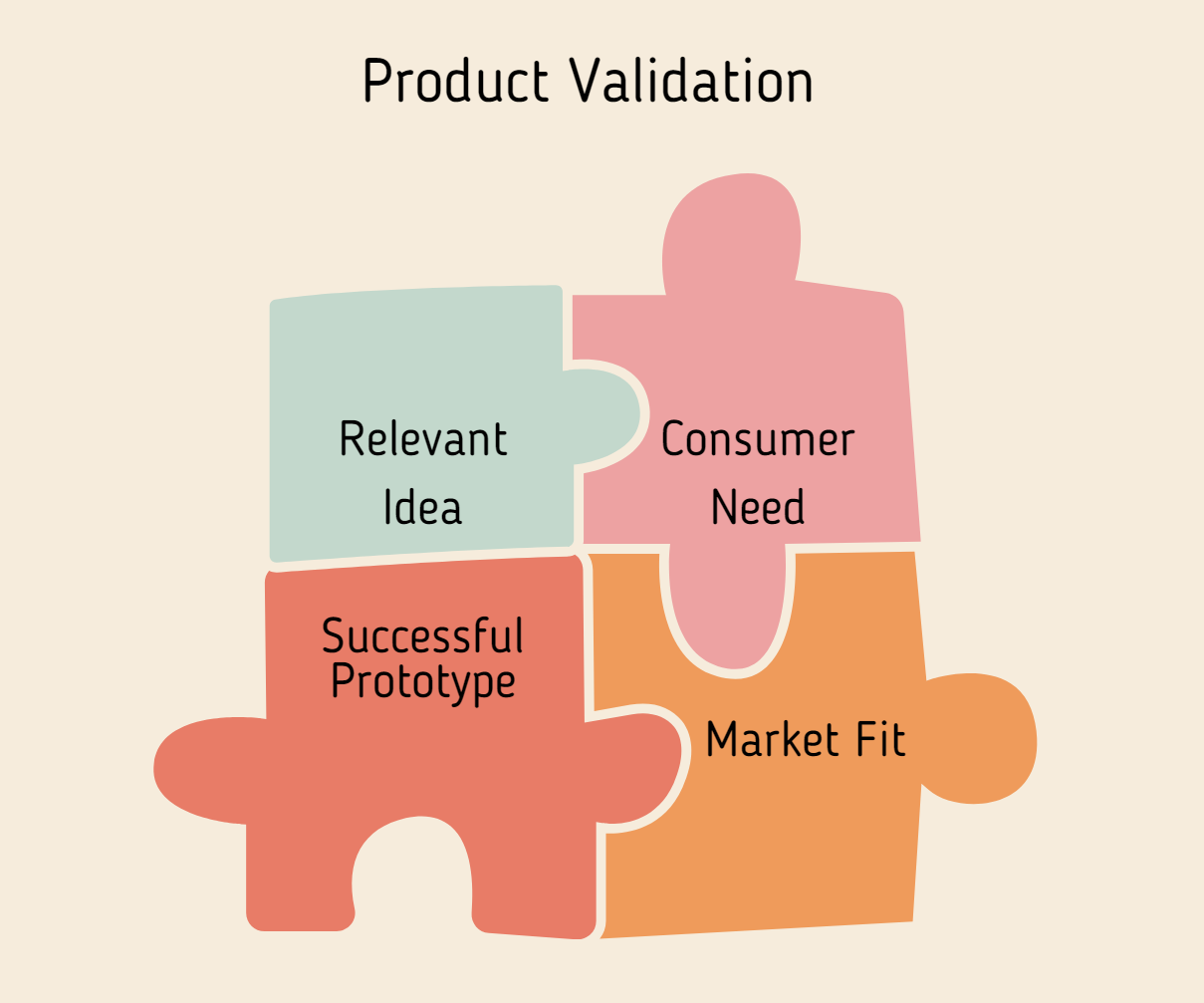
Define a need
Ask yourself, what do consumers in our market need? What can you do for them that others aren’t doing?
Sometimes a need is obvious. Other product ideas are challenging to identify.
For example, smartphones and tablets are indispensable today. Before the launch of the first device, consumers didn’t need them.
Identify your audience
With a defined need, it’s time to identify your target audience. Who are the people most likely to have the need you propose to meet?
Product managers often lead teams to conduct market research. They use consumer reports, customer feedback, industry news sites, and other sources. Segment your audience into buyer personas that you plan to target.
A buyer persona should include the following:
- Demographics – age, gender, income level, education, family size, industry, job title
- Personal characteristics – hobbies, interests, beliefs, ethics, goals
- Behavior – shopping and spending habits, decision-making priorities for choosing a brand
- Pain points – what are their common problems and expectations from solutions?
- Communication channels – where they go to research and find companies like yours
When choosing a business or product name, think about your personas. Make sure the name resonates with them and reflects the identity you want to show.
2. Research the market
It’s important to know how likely you are to succeed. CB Insights reports that 35% of startups fail because there is no market need.
Analyze the size of your target market and its growth potential. Figure out what budget or resources your audience has available to them.
Competitor analysis
Chances are you aren’t planning to introduce a unicorn. There will be some overlap with existing offerings in the marketplace. Glean useful information from conducting a competitor analysis.
Here’s a brief refresher on how to do a competitor analysis:
- Identify the leaders in your target market
- Highlight which brands have a similar product
- Hone in on those brands targeting your buyer personas
- Research financial reports, industry news, review sites, social media, and other sources
- Spot gaps in the market
Ask yourself these questions in your research:
- What are the strengths and weaknesses of each competitor?
- What is their pricing strategy?
- How can you position yourself against them? How will your product be different?
There are plenty of tools that can make analyzing the competition easy. Some of these are Similarweb, Owler, and Morning Data.
If little to no opportunity appears to exist, you may need to head back to the drawing board.
3. Better understand your audience
You have some buyer personas that almost feel like real people. Do you know what’s better than figments of your imagination? Actual carbon-based lifeforms capable of spending money.
You’ve gotten this far. It’s now time to better understand who your target audience is and what they want.
Use the following sources to further define your customer segments:
- Customer surveys – install these as pop-ups on your website or send them out as part of email campaigns.
- Social media – observe what people talk about on relevant social channels. Engage with your audience and ask them what they think.
- In-person interviews – conduct user interviews to gather input straight from the source.
- Customer feedback platforms – collect and manage all feedback from a central hub.
- Focus groups – bring in paid prospects that represent your target audience segments. Ask open-ended questions and gain valuable insights. Shape your product into what people need.
4. Start with a prototype
A recent report shows that startup failures are up 58% in 2024.
There’s no point in developing your app or physical product only to go out with a whimper. Kick things off with low-fidelity prototypes. They are also known as minimum viable products (MVPs).
If you’re a PM leading a team of developers, you’ll use your MVP to conduct user testing. Platforms like Userlytics streamline the prototyping process. Record user sessions and observe what they do.
Ask users what they like about your MVP and what’s missing. Take note of product features that are must-haves, nice-to-haves, and not necessary.
If you operate in the analog world, a user testing platform is useless. Instead, host prototype showcases to get the same type of insights. Invite potential customers to attend and try out your low-fidelity prototype. Record each interaction and gather feedback by asking questions during the showcase.
5. Test, adjust, and improve
You won’t put out the software on the first try. Launching a digital or physical product is an iterative process. If things have gone well so far, you are ready to flesh out your MVP one step at a time. Take onboard the feedback and insights you’ve acquired. Consult with your product team to make changes and add features.
Don’t do everything. Stick to the most important improvements. Use project and feedback management platforms to streamline continuous development. Review and organize customer feedback by type, like Design, UI, Mobile, Security, or UX.

Group feedback into categories like “feature requests” or “frustration.” Prioritize popular requests or those likely to drive the most revenue.
6. Check for product-market fit
Product validation continues beyond the launch. Continuous feedback helps confirm if your offering still fits the market.
Track these performance metrics to uncover insights:
- Customer retention rate, CSAT, NPS, and churn rate show if customers are unhappy or leave. If they leave or complain, your product might not meet their needs.
- Conversion rates and low website visitors may mean little interest in your product or poor positioning.
- Customer lifetime value (CLV): A drop in CLV can mean your product isn’t keeping customers engaged.
Use these metrics to diagnose product-market fit issues and refine your strategy.
Quick tips to ensure an efficient product validation strategy
- Use a customer feedback platform – centralize and manage insights.
Canny Autopilot gathers and organizes feedback from tools like Intercom, Help Scout, Gong, G2, and your feedback board. It helps you spot common problems users mention, so you can fix issues and improve your product to meet their needs.
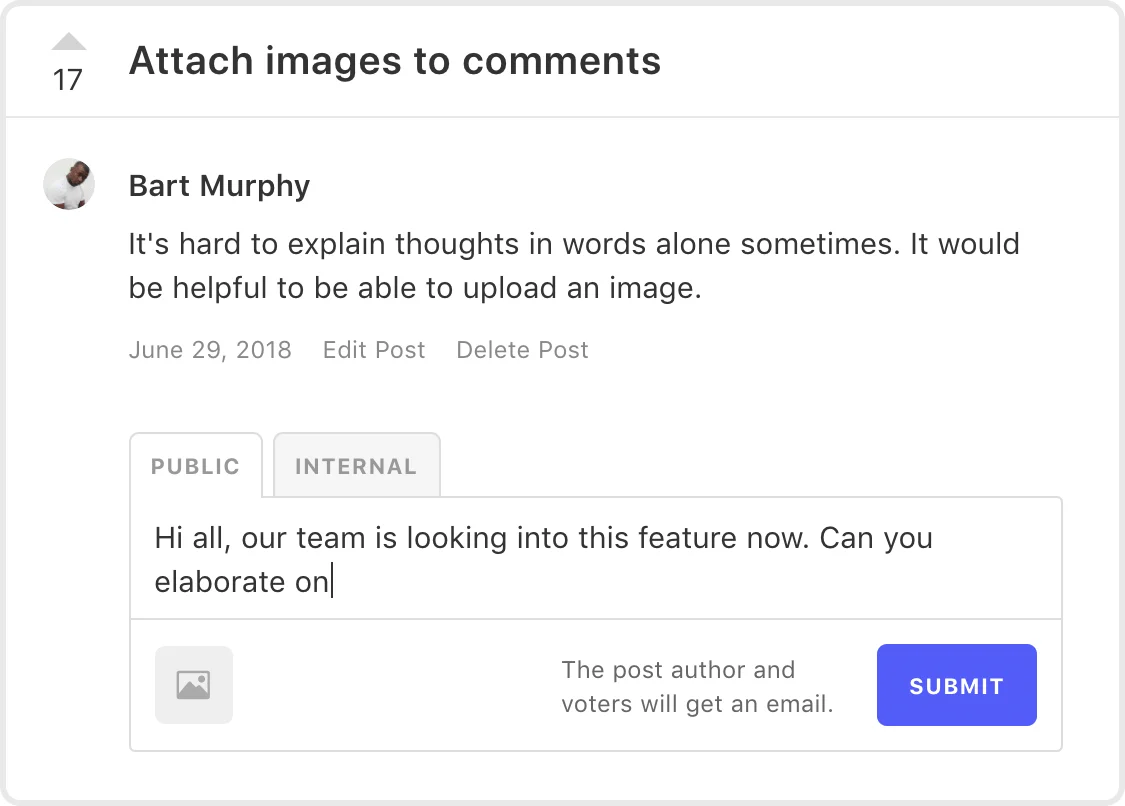
- Build a crowdfunding campaign – kickstarter and other sites provide validation opportunities. You can measure consumer interest before diving deeper into product development.
- Leverage social listening tools – Use social listening tools like Sprout Social to track trends on social media. Stay on top of what consumers say about your competitors and your products.
- Use a pre-launch landing page – build a landing page before you develop a product or prototype. For a small investment, you can gauge customer interest with waitlist sign-up.
- Test the waters with pre-orders – calculate what you need to meet profitability. Your pre-launch landing page or crowdfunding network are great ways to process pre-orders. If the required order number isn’t reached, cancel and refund everyone. It’s no harm, no foul.
Follow a proven product validation process
You want to disrupt the marketplace with your product ideas. But, you don’t need to reinvent the wheel for validation. Follow the basic steps in this guide and only release products when they are fit for the market.
A product validation approach saves your business resources. It also helps you put out innovative products that resonate with your audience. Put on your lab coat, hypothesize a need, and start experimenting today.



